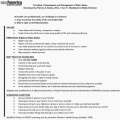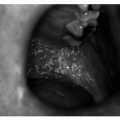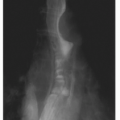INTRODUCTION
The prevalence of bereavement increases with age, making it a significant challenge for older adults whose health and adaptive capacities may already be compromised.
1 Family physicians and general internists often provide care for multiple generations of a family over long periods, developing a rapport that is valuable at times of loss. They are in a unique position to identify the bereaved, track the course of their experiences, screen for complications, and provide support throughout the process.
Bereavement is a significant health risk for many patients.
1,
2 Within 5 years of the death of a spouse, mortality
from ischemic heart disease increases between 20% and 35%.
2 Grief reactions are also associated with high-risk health behaviors, development of high blood pressure,
2 and increased use of alcohol and tobacco.
1 Unresolved grief is related to an increase in the incidence of anxiety and depressive disorders, which in turn negatively affect the course of many chronic diseases.
2 There is also a related increased risk of suicide attempts in the bereaved.
1 These health risks increase the burden on an already overtaxed health care system and on individual providers. After the loss of a spouse, there is an increased rate of clinic visits by widowed persons.
1 Furthermore, studies of bereavement in the elderly have found that normal grief symptoms can persist up to 4 years after the death of a spouse.
2This chapter briefly reviews guidelines for the identification and management of bereavement in the primary care office. Although the focus is on helping spouses and families through the grieving process, we also address the challenge of assisting dying patients with managing their own anticipatory grief.
Terminology
Interpretation of guidelines and relevant research requires consistent terminology. The terms
loss, bereavement, mourning, and
grief are often used interchangeably, with some confusion. We present the following definitions as common ground for discussions on the assessment and treatment of grief reactions.
3,
4,
5Loss: The permanent separation from and deprivation of something or someone of value and attachment. The loss may be physical (tangible) or psychosocial (symbolic). Some examples of loss include death of a loved one, loss of a beloved object (e.g., house burning down), loss of functioning or independence (e.g., decreased mobility or amputation), or a significant change in one’s life (e.g., entry into a nursing home).
Bereavement: The period after a loss during which mourning occurs and grief is experienced.
Mourning: The culturally defined process by which people adapt to loss. “Mourning refers to the social expression of grief … and it includes rituals and behaviors that are specific to each culture and religion”
6 (page 130). For example, in Navajo culture the public rituals of mourning occur for only 4 days.
4
Normal Grief: The unique personal response to separation and loss. The grief response includes psychological, behavioral, social, and physical reactions including shock, disbelief, overwhelming sadness, anxiety, poor sleep and eating patterns, fatigue, headache, and social withdrawal. Types of grief
4,
6 include:
Anticipatory Grief: A grief reaction that occurs in anticipation of an impending loss. This includes anger, guilt, anxiety, irritability, sadness, feelings of loss, and/or a decreased ability to perform usual tasks.
4
Acute Grief: Grief occurring at the time of death or in the first few days/weeks after death. It may include denial, intense crying spells, panic attacks, derealization (a sense of unreality), emotional numbness, and a variety of somatic symptoms that can seem exaggerated or frightening to family and friends.
Chronic Phase of Normal Grief: Refers to intense grief that subsides during the first year and may then return as temporary waves or pangs of grief at certain times, such as the anniversary of the spouse’s death, birthdays, or specific reminders. This exacerbation of grief is episodic, and grief reactions diminish in frequency and intensity with time.
6
Complicated Grief: A syndrome characterized by delayed or incomplete adaptation to loss.
1 Complicated grief occurs when symptoms do not resolve over time and/or increase in intensity.
NORMAL GRIEF
Misdiagnosis of grief reactions often occurs because intense symptoms of grief are seen as indicators of depression or dementia. Accurate differential diagnosis requires a clear model of normal grief and algorithms to distinguish normal grief from complicated grief and depression.
Initially, normal grief was described as occurring in stages.
7 The classic Kubler-Ross stages included denial, anger, bargaining, depression, and acceptance. Bowlby theory of attachment
7 postulated the following series of stages: Shock and numbness, yearning and searching (i.e., separation anxiety and denial of the reality of the loss), disorganization (i.e., depression, despair, or difficulty planning for the future), and reorganization and positive readjustment. Research now indicates that grief does not unfold in so orderly a manner
1 but often comes in unpredictable waves, with some stages or reactions being more prominent than others.
8 Practitioners who are preoccupied with a rigid stage model often misdiagnose normal grief as complicated grief or depression. Unfortunately, patients who are aware of the stage model often feel they are not grieving “the right way” if their reactions vary. A clinically useful way to view normal grief is as a set of common reactions that vary in intensity but diminish over time. The commonly observed reactions
1,
4,
7 are as follows:
Sadness: Overwhelming sadness is of course the central feature of grief. Surviving family and friends may be unable to talk about the deceased without crying. Initially, some weepiness may be constantly present. In normal grief, the frequency and intensity of crying gradually diminishes.
Shock: Symptoms of shock include disorientation, emotional numbness, cognitive slowing, and fluctuating dissociation. This is more common in acute grief immediately following death but may recur after an
intense trigger (e.g., autopsy results). Persistence beyond 6 months is an indication of complicated grief.
1
Denial: Some patients may refuse to talk about their relative’s death, may resist bequeathing the deceased’s possessions, or may leave intact previous plans involving the deceased. Others may avoid objects or situations related to the deceased or may avoid talking about them altogether. These behaviors can be an initial adaptive reaction to protect the self from pain of loss and fear of the future. However, normal grieving eventually entails a gradual acceptance of the loss and a growing accommodation to new roles and situational demands.
Separation Distress: Episodic intense yearning for the deceased and thoughts about the deceased are characteristics of separation distress. However, after 6 months most bereaved patients exhibit less frequent and less intense symptoms of separation distress.
1
Anger: Anger is a common reaction to stress. Hostility may be directed toward the deceased, health care providers, family, and others. When present, this largely resolves within 6 months.
Guilt: Commonly, surviving family members experience pangs of guilt that they did not do enough for the deceased. They may feel that they should have been more alert to signs of deterioration or acted more assertively to seek emergency medical care. Temporary expressions of guilt are normal and gradually subside over time.
Acceptance and Adaptation: Normal grief is characterized by the episodic expression of the symptoms described in the preceding text, which gradually diminish over time and show marked improvement by 6 months. Some reactions may last 2 years or more but the overall course is one of less intense grief and increasing functional ability. The adapting patient shows increasing self-confidence, trust in others, acceptance of the loss, expressed belief that life is still meaningful, and a willingness to accept new life roles.
1
Differential Diagnosis of Normal Grief and Depression
A patient’s history of a recent major loss may predispose the physician to not consider medical comorbidities that may be contributing to the patient’s current depressive symptoms. It is important to rule out the existence of undiagnosed medical conditions that may present with depressive symptoms. This workup should include a thorough medical history and physical examination, review of prescribed and over-the-counter medications for side effects and polypharmacy, screening for substance abuse or herbal treatments that may impact mood, Mini-Mental State Examination, thyroid panel, complete blood count, basic chemistry panel, vitamin B
12 and folate levels, and serum drug levels (if the patient is taking medications such as theophylline or digitalis). Toxicology screen and an electrocardiogram may also be indicated. A more complete discussion and table of medical differential diagnosis of depressive symptoms in the elderly are given in
Table 17.5.
Having ruled out medical comorbidities, the clinical challenge is to distinguish normal grief from clinical depression. The presentation of normal grief and depression usually begin to diverge between 3 and 6 months after the loss. Periyakoil and Hallenbeck
9 outline the following differential indicators for normal grief and depression:
Temporal Variation: Grief diminishes over time and is experienced in waves triggered by memories or cues that remind the person of his or her deceased partner. Depression is often defined by a persistent sadness or dysphoria that can become chronic without treatment.
Negative Self-image: Grieving patients present a relatively normal self-image. Depressed patients often show a pervasive sense of worthlessness.
Anhedonia: The ability to experience pleasure and enjoy special moments with family is still present in patients who are grieving. Depressed patients often show an inability to experience pleasure.
Hopelessness: Whereas depressed patients often present with a marked sense of hopelessness, the grieving patient shows a capacity to think about and anticipate the future.
Response to Support: Patients who are grieving may withdraw temporarily, but at other times they will seek or appreciate social support to help them through the grieving process. Depressed individuals are more likely to persistently withdraw from social contact and derive little solace from it.
Preoccupation with Death: Grieving patients may show some occasional preoccupation with death and may express a desire to be with the deceased. However, these patients do not experience the persistent and active suicidal ideation or intent that can be present in clinical depression.
COMPLICATED GRIEF
Some bereaved patients seem to “get stuck.” For these patients the more intense symptoms of normal grief (e.g., denial, sadness, and numbness) do not diminish over time. Prigerson and Jacob’s extensive research on bereavement reactions has identified complicated grief as a syndrome distinct from normal grief and depression.
1 The diagnostic criteria for complicated grief
1 are given in
Table 6.1.
Complicated grief produces greater functional impairment than normal grief
1 but is not as severe as depression. Complicated grief is also associated with adverse health outcomes if untreated (including high blood pressure, ulcerative colitis, suicidal ideation, cancer, and cardiac events).
1 The careful differential diagnosis of complicated grief and depression is important because treatment of
complicated grief differs from that of depression (discussed in the subsequent text).
1Complicated grief, normal grief, and depression share some core symptoms (e.g., sadness, guilt, and appetite and sleep disturbance). In fact, during the first few weeks or months, normal grief and/or complicated grief may be indistinguishable from depression.
9 One should begin careful monitoring for complicated grief and/or depression by approximately 6 months.
1 Compared to normal grief, the distinguishing feature of complicated grief is a preoccupation with the deceased that does not diminish over time (see
Table 6.2). This may include intrusive thoughts about the deceased, yearning and searching for the deceased, or assuming certain behaviors or mannerisms of the deceased. Complicated grief does not include the persistent vegetative signs that characterize major depression.
The presence of suicidal ideation should prompt an immediate psychiatric referral at any point in the course.







